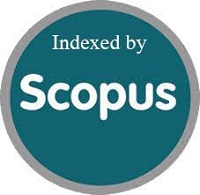Uji Validitas Konstruk terhadap Adaptasi dari Wong and Law Emotional Intelligence Scale (WLEIS)
DOI:
https://doi.org/10.15408/jp3i.v5i2.10789Keywords:
Construct Validity, Emotional Intelligence, CFA, Parallel TestAbstract
The objective of this study were (1) to examine the construct validity of emotional intelligence scale which adapted and modified from Wong and Law Emotional Intelligence Scale (WLEIS) (2002) and (2) to find way of scoring by using the raw score. The scale of emotional intelligence consist of four dimension, self emotion appraisal, other emotion appraisal, use of emotion, and regulation of emotion. The subject in this study are 536 people. The analysis method used is Confirmatory Factor Analysis (CFA) using M-Plus 7. Testing of the construct validity in this study consist of three model of analysis, namely, each of dimension analysis, first order, and second order. In addition of this study, the researchers also conducted a parallel test.
Tujuan dari penelitian ini adalah (1) untuk menguji validitas konstruk dari skala kecerdasan emosional yang diadaptasi dan dimodifikasi dari Wong and Law Emotional Intelligence Scale (WLEIS) (2002) dan (2) untuk menemukan cara skoring dengan menggunakan raw score. Kecerdasan emosional ini terdiri dari empat dimensi yaitu, self emotion appraisal, other emotion appraisal, use of emotion, danregulationof emotion. Subyek dalam penelitian ini sebanyak 536 orang. Metode Analisis yang digunakan adalahConfirmatory Faktor Analysis (CFA) dengan program M-Plus7. Pengujian validitas skala pada penelitian ini dilakukan dengan tiga model analisis yaitu, analisis per-dimensi, first order, dan second order. Berdasarkan pengujian melalui model per-dimensi didapatkan empat item yang tidak mengukur subskala dari kecerdasan emosional. Selanjutnya, untuk pengujian model first order terdapat enam item yang tidak mengukur kecerdasan emosional, sedangkan untuk pengujian second order terdapat delapan item yang tidak fit atau tidak memenuhi asumsi dari confirmatory factor analysis. Setelah itu, dilanjutkan dengan uji paralel masing-masing dimensi.
References
Ciarrochi, J., Forgas, J.P., & Mayer, J.D. (2001). Emotional Intelligence in everyday life. USA: Psychology Press Taylor & Francis Group. Davies, M., Stankov, L.,& Roberts, R.D. (1998). Emotional intelligence: In search of an elusive construct. Personality Processes and Individual Differences, 75, 989-1015.
Goleman, D. (1999). Working with emotional intelligence. Jakarta: Gramedia Pustaka Utama.
Joibari A., & Taheri, N.M. (2011). The study of relation between emotional intelligence and students’ academic achievement of High School in Tehran city. Social and Behavioral Science, 29, 1334-1341.
Mehmood, T., & Gulzar, S. (2014). Relationship between emotional intelligence and psychological well-being among pakistani adolescents. Asian Journal of Social Sciences & Humanities, 3(3), 178-185.
Perez, J.C., Petrides, K.V., & Furnham, A. ___. Measuring Trait Emotional Intelligence. Diunduh dari http://www.psychometriclab.com/admins/files/measuring%20trait%20 ei%20(chapter).pdf (28 November, 2015)
Umar, J. (2012). Peran pengukuran dalam penelitian psikologi. JP3I. Vol. II, No. 2.
Wong, C.S., & Law, K.S. (2002). The effect of leader and follower emotional intelligence on performance and attitude: An exploratory study. The Leadership Quarterly, 13, 243, 274.



